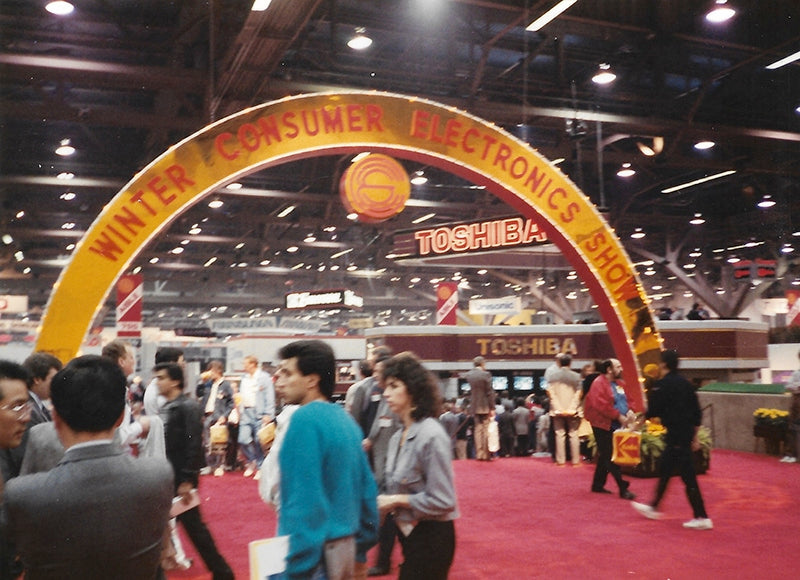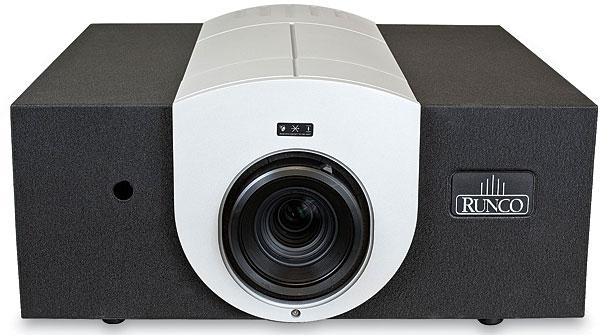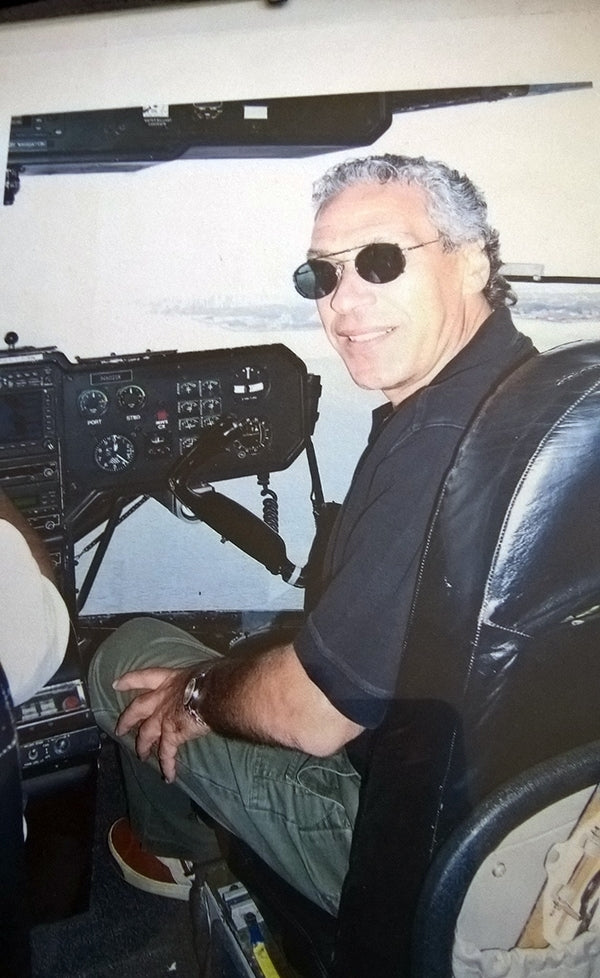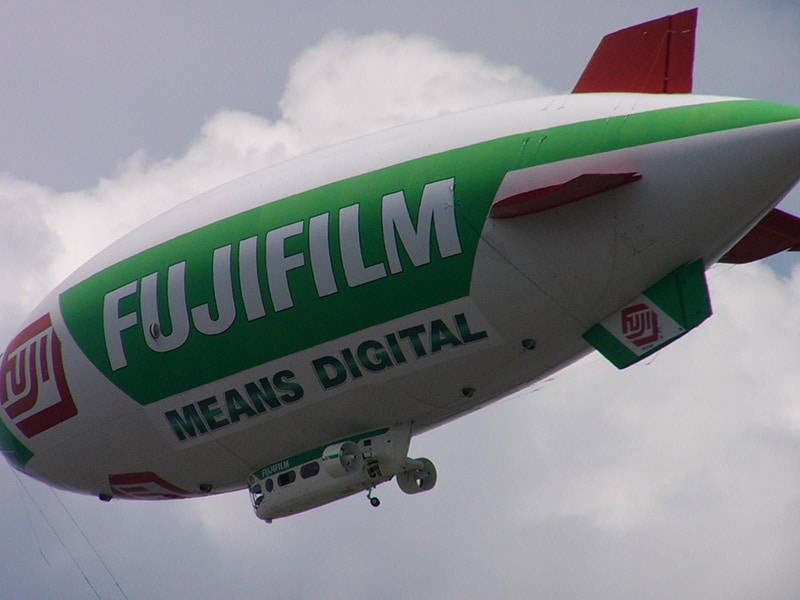It was explained to me that Penthouse magazine would not be using manufacturer’s product shots, because they did not want “Technomania’s” content to look like any other magazines. (The story of how they signed me on in the late 1990s is in Issue 168.) Good idea, I thought, and that spoke to their commitment to the column. I would be collaborating with a photographer (Bob Lorenz) who they hired to shoot the products that I chose.
The good news was that the photographer’s studio was one block away from my apartment building. The bad news was, well there really was not any bad news. The layout for “Technomania” covered two pages, and after a few years it was occasionally bumped up to four pages a month. That entailed featuring six to 12 products, which included my copy. I had to find these new products and make the necessary arrangements to get them into the studio in time for the photo shoot, which normally took one to two days. The studio was a big multi-purpose room at street level with its own entrance in a prewar office building on 16th Street just east of Union Square. The room was big enough to be a nightclub. Bob rented it for the days he was shooting. That meant that I had to arrange for everything to be shipped to me. Again, not a problem. I would load up a truck cart and schlep the stuff over on the designated day.
File this under the heading of, you think you know, but you do not. One day Bob arrived at the studio and was using his key to open the front door, when it was opened from the inside by someone he did not know. Bob stepped in and was promptly arrested. He had walked into a police raid. Looking around, he saw blackjack and poker tables. There was even a roulette wheel and a full bar. Apparently, the studio was a part time high-end gaming hall. Las Vegas Night in New York’s Flatiron district. Bob spent the night at the 13th Precinct. In the morning he was cleared and released. He told me the police were nice to him and constantly asked him if he was OK or needed anything. As far as he knew, nothing more ever happened with the room being used for gambling. He continued to use the space as a studio for years. In retrospect, he found it amusing.
Penthouse gave me the freedom to pick and choose my editorial content and use my discretion. My deadline was the 15th day of the month. Additionally, my column was not a product review-type feature. I was told that If I was not happy with a product, then toss it and move on to something else. My beat was what was new in consumer technology, cool stuff, gadgets, or as I would put it when people would question why Penthouse was interested in such products, “toys for boys.” The only other input from any of the editors was the rare suggestion of covering a certain category, or featuring an assortment of different types of products. As time went on, I needed to cover more products due to me doing more pages. Overall, they allowed me to make the creative decisions and treated me well (just like Copper magazine does). I responded by never being late on a deadline, communicating with the editors when necessary, and never giving them problems or unpleasant surprises.
A few months later it was time to attend my fourth CES. I was bumming a taxi ride from fellow consumer electronics writer Brent Butterworth, and he said to me, “congratulations; you now are working in mainstream media.” “Really?” I exclaimed. Hmmm, I guess so; Penthouse’s subscription base was close to a million, plus the impulse sales (from newsstands, airports and other outlets) were among the highest of all magazines at that time.
Brent was right; my stock had risen, big time. Suddenly I was considered legitimate press. Not to everyone, but by most public relations firms, and manufacturers. The fact that Penthouse was an “adult” magazine was not a concern. Once, and only once, a small inventor asked me not to include his product in “Technomania.” I understood his religious considerations and respected his wishes, but he was passing up some great publicity.
When I first went to CES, I stayed at the Hotel Continental (now the Silver Sevens Hotel and Casino, formerly known as Terrible’s) at 4100 Paradise Road in Las Vegas. It was a dingy run-down hotel with ripped carpeting. It was depressing. The casino was always active, so I tried my hand at blackjack and that proved not to be in my skill set. The curious thing was that everyone at my table were employees of some of the big casinos on the Strip. Why would they come to this run-down place, I asked? The answer was that it was not cool for employees to gamble where they worked. Win or lose, it was not good for one’s career. While casinos love gamblers, they did not want their employees to be gamblers.

The unglamorous life: Terrible’s, formerly the Hotel Continental , now the Silver Sevens Hotel and Casino. Courtesy of Wikimedia Commons/graham.
My second year at CES I was still on a budget. I shared a room with an editor colleague, George Mannes (now senior editor at AARP: The Magazine), and that made the Hotel Continental less depressing. The next year George and I stayed at a nicer hotel on the Strip. That third year I caught a killer cold or something and I had to push myself hard to work the show. Back in New York at an event a few months later consumer electronics journalist Stewart Wolpin accused me of giving my cold to him, and fellow CE reporter Ron Goldberg said to Stewart, “Hey man, don’t blame Ken; you could have caught that anywhere at the show.” Many CES attendees get sick – there’s even a term for it, the CES Flu. Hell, we (myself included) might have been the first people in America to get COVID-19. We are talking about early January 2020. The CES attendance numbers in 2020 were more than 170,000 people. The second week in January in Las Vegas, the town is so packed it is a Petri dish.
Priority number one then and always was my commitment to working the show and making the most of my time. I would get up early and be there for the pre-show press conferences. I never had to concern myself with food; great food was everywhere and always free. At these morning press conferences there would be bagels, cream cheese, yogurt, small boxes of cereal with milk, and sometimes scrambled eggs, bacon, sausages, coffee, tea and an assortment of juices. In my early years I went to all of the press conferences and that solidified my relationships with quite a few public relations companies. I covered all the name manufacturers, but so did everyone else. My quest became finding unique products. What became interesting to me were the unusual or innovative new products that would become game changers. I would do an overview of the big guys, like Sony, Panasonic, and so on, but most of their announcements became common knowledge by the time a monthly magazine could get the story out.

Winter CES, 1988. Courtesy of Frank Doris; this was his first CES.
This being my fourth CES and now knowing my way around, I concentrated on smaller outfits that gave me “aha!” moments. Also, I covered car, phone, boating and outdoor gear, not just home consumer electronics, looking to find things that were cool but off the beaten path. This was what I did initially with Taser International (now Axon; I mentioned them briefly in Issue 168). Then, they were a small company with less than 10 employees, but with an interesting concept. I was the first mainstream press person to write about them.
The idea for the Taser was conceived by the Smith brothers (no cough drops or beards) from Phoenix. They informed me that the first night my story came out they sold over a hundred units. They were so excited. I asked them why they would manufacture a stun gun that used compressed air instead of the normal gunpowder. Their idea was to make a legal stun gun, something that was a safer, non-lethal self-defense tool. They had lost their best friend to gun violence and felt there had to be a non-lethal method of protecting oneself. (There was more, but I would be going off track it I went into it here.) Today, they supply most of the police departments in America, along with offering retail sales. That is a long way from the video the company once did of the two Smith brothers in their suburban Phoenix backyard, taking turns Tasering each other while standing in a toddler’s wading pool. (They showed the homemade video to me to prove you wouldn’t be electrocuted or permanently injured by a Taser.)
Some of the other then-small companies I covered went on to become major industry players, like Valve Amplification Company (VAC), maker of tube audio components; Meridian Audio, one of the first to offer a complete high-end audio playback solution including a music server, and Runco International (now part of Planar Systems, Inc.), a manufacturer of video display devices. In fact, founder Sam Runco was the one who coined the term “home theater.”

Runco QuantumColor Q-6501 video projector, circa 2012. Runco was once a dominant force in high-end home theater projectors.
In my first few years attending CES, most press conferences were on the second floor of the Las Vegas Convention Center. The room most used was N247 if my memory serves me correctly. Every year the show grew larger and in 2002 the South Hall was added, and the main press room was moved there. Also, many of the press conferences took place in the rooms next to the big press room. There were some press events that were off-site in other hotels and restaurants. Those were potentially a problem for me. An off-site press conference could be around 50 minutes long, which was normal. However, even if everything went according to plan, it would cost me more than two hours when you added in the travel time to get there and back to the main Convention Center. I feared being stranded away from the show. Even getting a taxi took at least an hour of waiting, and even if transportation was provided by the company holding the press event, it still took a big chunk of time. Traffic is a killer on the Strip, and it was always in gridlock during CES.
Toshiba once had a press conference in what is now Planet Hollywood, and they had a bus at the Convention Center to take us there. After the press conference there was no bus for the return trip. I asked the PR person what arrangements were made to get us back, and he said, “none!” while giving me an annoyed look. Even if you planned carefully, sh*t happened. In the 1990s and early 2000s there were some incredible press events. I met Lady Gaga, P. Diddy, Shaq, Drew Brees and countless others at these events. Not to mention private concerts, including one by John Legend.
Back then, some companies had really big budgets. That year, the Fuji blimp was in town, and I was invited for a ride. In the early evening, Fuji provided transportation to North Las Vegas Airport. When we got there, they were not ready, so I had a chat with the captain. This would be filed under things I did not know and never thought about. The Fuji blimp is part of a fleet that includes the Goodyear and the MetLife blimp and every other blimp that hovers over big sporting events. OK, you might have figured that out, but I have to point out that keeping these blimps airborne is an incredibly detailed and organized multi-team effort. They are always flying around the country. Each blimp has a group of professionals that are divided into two sets of ground crews who leapfrog to accommodate the blimp. There must be one crew at liftoff and another crew waiting when the blimp arrives at its new destination, and no, you cannot try to race the blimp to its destination. The blimp will always get there faster.
It is somewhat like a Formula One race team. blimps need a mind-boggling amount of maintenance. There are four or more tie lines that are held and guided by the ground crew. These prevent the blimp from being blown sideways or into other structures, and the ground crew has to carefully coordinate releasing them when the blimp takes off. When it arrives at its destination, quite possibly hundreds of miles away, the other ground crew is already there to bring the blimp in for a soft landing. It is a hell of a lifestyle, and it must be good because there is not much turnover among crews.

Co-pilot Ken in the Fuji blimp.
We are ready to go, and we board the blimp. It is me, Stewart Wolpin, and two other people I do not know. We float up to a couple of thousand feet and head towards the northern end of Las Vegas Boulevard., the Strip. In what seems like slow motion we glide south to Fremont Street, holding our altitude above the spectacle below. The sun is starting to set while we are cruising the Strip southwards above and between the neon-lit hotels. The sunset with all of its spectacular colors and the light-up Vegas Strip was a beautiful thing. Out of this world! The route along Las Vegas Blvd. takes a little more than a few minutes and when we get to the Luxor hotel, we take a slow and wide U-turn westward and head back to North Las Vegas Airport.
As we head downward to a spot of asphalt near a hangar, I see the ground crew spread in a circle, which I assume is the blimp’s landing spot. The tie lines go out and each member of the ground crew grabs a line. The engine seems to go quiet, and the crew pulls the blimp down for a soft landing. The ground crew ties everything down. We line up to get off and walk down the steps where the pilot is standing. He gives each of us Fuji wings and shakes our hands. Or should I say he attempts to. As I step up to him, he sneezes into his hand and then sticks his hand out to shake mine. I decline to shake, mentioning the sneeze, and he realizes why, smiles, says thanks for joining them, and hands me my Fuji wings.

The Fuji blimp over Manhattan.
Header image courtesy of Pixnio.com/Donald Riesbeck Jr.


